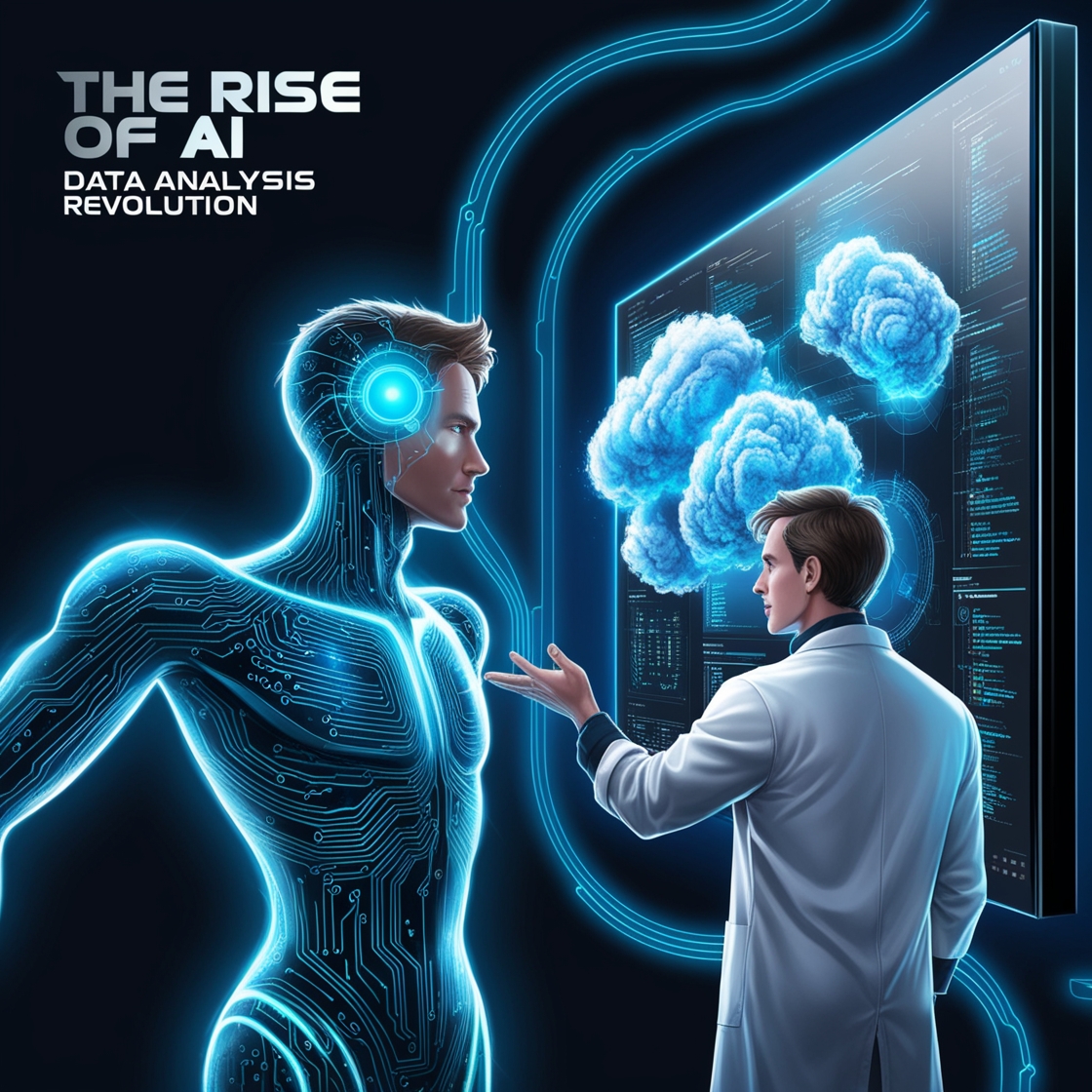Introduction
The digital age has ushered in an explosion of data, transforming the landscape of business, science, and everyday life. In this whirlwind of information, artificial intelligence (AI) has emerged as a game-changer in data analysis. It’s not just about crunching numbers anymore; AI offers powerful tools that can uncover insights faster and more accurately than traditional methods. So, why is AI becoming the go-to solution for data analysis? Let’s dive into the fascinating rise of AI in this critical field.
2. What is Artificial Intelligence?
At its core, artificial intelligence refers to the simulation of human intelligence processes by machines, particularly computer systems. This includes learning (the acquisition of information and rules for using it), reasoning (using rules to reach approximate or definite conclusions), and self-correction. AI is generally categorized into two types: narrow AI, which is designed for specific tasks (like virtual assistants), and general AI, which can perform any intellectual task that a human can do. The journey of AI has been long and intricate, dating back to the 1950s. Its evolution has seen it transform from a theoretical concept into a powerhouse technology driving numerous industries today.
3. Understanding Data Analysis
Data analysis is the process of inspecting, cleansing, transforming, and modeling data to discover useful information, draw conclusions, and support decision-making. Traditionally, data analysis relied heavily on manual processes and human intuition, but this approach is increasingly being overshadowed by automated systems. Modern data analysis, powered by advanced technology, can handle vast amounts of data at unprecedented speeds, making it essential for organizations to stay competitive.
4. The Intersection of AI and Data Analysis
AI’s ability to process and analyze data at lightning speed is what makes it a perfect partner for data analysis. With machine learning algorithms, AI can identify patterns and trends in data that would be impossible for a human to detect. This intersection not only enhances the speed of analysis but also improves accuracy, as AI can continuously learn from new data and adapt its methodologies. The benefits are immense—ranging from better decision-making and operational efficiency to more personalized customer experiences.
5. Key Technologies Driving AI in Data Analysis
Several key technologies are propelling the integration of AI in data analysis:
- Machine Learning: This subset of AI involves algorithms that learn from data, identifying patterns and making predictions without being explicitly programmed. It’s the backbone of many AI applications in data analysis.
- Natural Language Processing (NLP): NLP enables computers to understand, interpret, and respond to human language, making it possible to analyze unstructured data, such as customer feedback and social media posts.
- Predictive Analytics: This involves using statistical algorithms and machine learning techniques to identify the likelihood of future outcomes based on historical data, helping businesses make proactive decisions.
6. Real-World Applications of AI in Data Analysis
AI’s applications in data analysis are vast and varied. Here are some noteworthy examples:
- Business Intelligence: Companies leverage AI to analyze sales data, customer behavior, and market trends, leading to more informed strategic decisions.
- Healthcare Analytics: AI tools analyze patient data to improve diagnosis, treatment plans, and patient outcomes while also optimizing operational efficiency in healthcare facilities.
- Financial Forecasting: Financial institutions use AI to predict market trends, assess risks, and enhance investment strategies, leading to better financial management.
7. Challenges in Implementing AI for Data Analysis
While the advantages are clear, several challenges accompany the integration of AI into data analysis:
- Data Privacy Concerns: As AI systems require large datasets, ensuring the protection of sensitive information is critical.
- Bias in AI Algorithms: If the data fed into AI systems is biased, the results will also be skewed, leading to unfair or incorrect conclusions.
- Technical and Resource Limitations: Many organizations lack the necessary infrastructure and expertise to effectively implement AI solutions.
8. Future Trends in AI and Data Analysis
The future of AI in data analysis is bright. We can expect:
- Growth of AI Technologies: As AI technology continues to evolve, its applications in data analysis will only expand, providing even more sophisticated insights.
- Increasing Importance of Ethical AI: As concerns about bias and privacy grow, the demand for ethical AI practices will become more pronounced.
- The Role of Big Data: With the ever-increasing volume of data generated, the synergy between big data and AI will drive innovations in data analysis techniques.
9. Conclusion
The rise of artificial intelligence in data analysis marks a pivotal shift in how organizations interpret and leverage data. With its ability to enhance speed, accuracy, and decision-making, AI is reshaping industries and creating new opportunities. As we move forward, embracing AI responsibly and ethically will be crucial to maximizing its benefits while mitigating its challenges. The future of data analysis is undoubtedly intertwined with AI, and those who adapt will lead the charge in this exciting era.
10. FAQs
What are the benefits of using AI for data analysis?
AI enhances speed and accuracy, uncovers insights from large datasets, and enables proactive decision-making.
How does machine learning contribute to data analysis?
Machine learning algorithms learn from data patterns, allowing for improved predictions and insights without explicit programming.
Are there any risks associated with AI in data analysis?
Yes, risks include data privacy concerns, potential bias in algorithms, and the need for technical expertise.
What industries benefit most from AI in data analysis?
Industries like healthcare, finance, retail, and marketing significantly benefit from AI in data analysis.
How can companies start integrating AI into their data analysis processes?
Companies can begin by assessing their data needs, investing in AI tools, and training staff on AI technologies.
